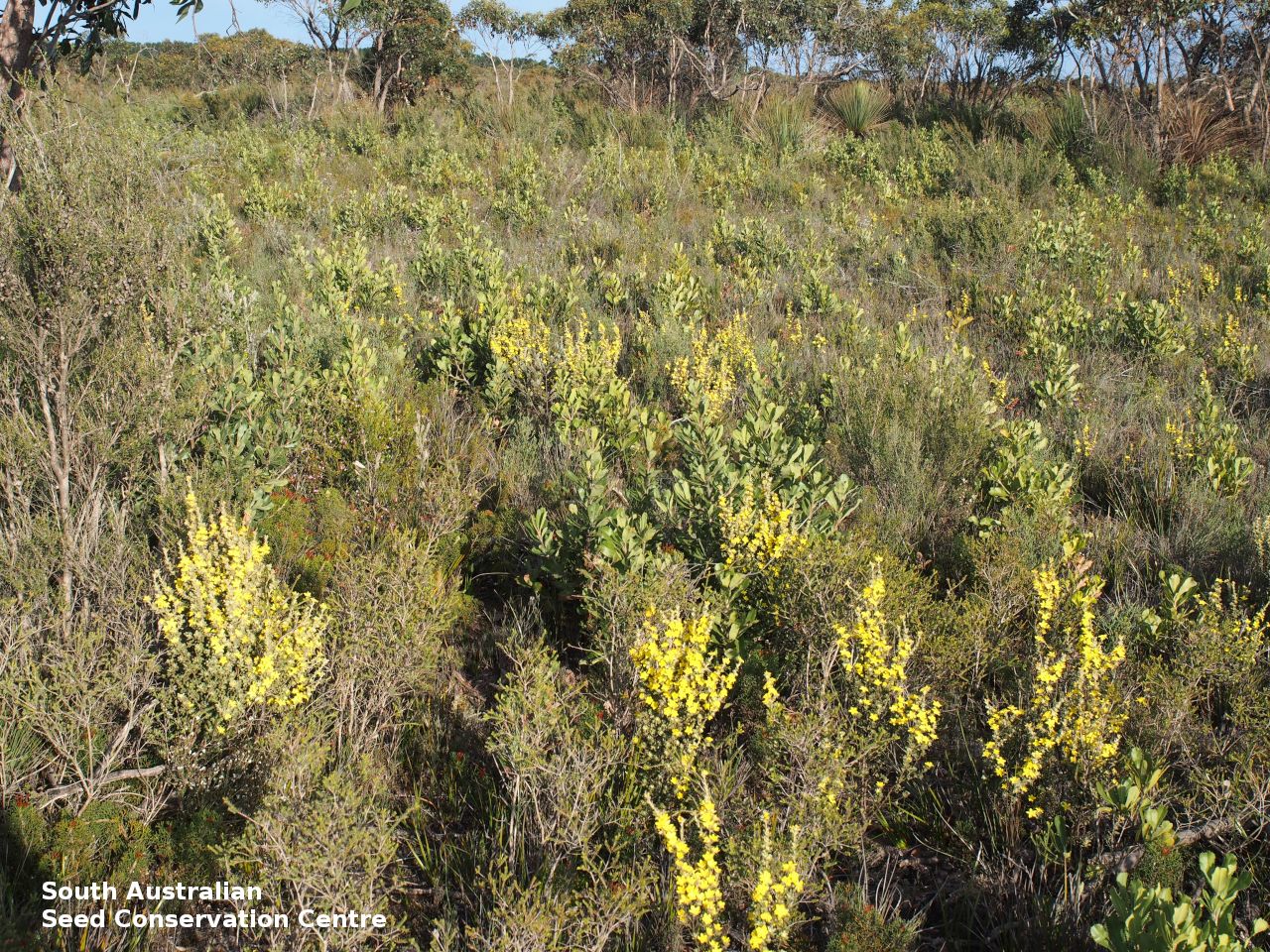














Botanical art
Prior names
Pleurandropsis phebalioides
Common names
Downy Star-bush
Etymology
Asterolasia from the Greek 'aster' meaning star and 'lasios' meaning hairy; referring to the stellate tomentum hairs on the leaves. Phebalioides means resembling the genus Phebalium.
Distribution and status
Found in a very small area on the western side of Kangaroo Island in South Australia, growing in open woodland on ironstone and sandy soils. Also found in Victoria. Native. Very rare in South Australia. Very rare in Victoria.
Herbarium region: Kangaroo Island
AVH map: SA distribution map (external link)
Plant description
Small slender shrub to 1.5 m high with densely grey-silvery hairs on branches and leaves. Leaves densely crowded, lacking obvious petioles less than 1 cm long, densely stellate-tomentose hairs particularly on the lower surface. Flowers are small, star-shaped bright yellow, solitary along stems. Flowering between September and December. Fruits are brown papery capsules with a number of segments, each containing a seed. Seeds are grey to dark brown, mottle bean-like seeds to 2.2 mm long and 1.7 mm wide. Seed embryo type is linear fully developed.
Seed collection and propagation
Collect seeds between November and January. Collect capsules that are turning brown with dark seeds in each segment. Have to keep an eye on the developing capsules as it will split and release the seed quickly. An option is to enclose the developing capsules with a small breathable bag. Place the capsules in a tray and leave to dry for a week. Then rub the pods with your hands to dislodge the seeds. Use a sieve to separate the unwanted material. Store the seeds with a desiccant such as dried silica beads or dry rice, in an air tight container in a cool and dry place. This species has high seed predation. This species is generally difficult to germinate, it has physiological dormancy and complex germination requirements.
Fire response
Obligate re-seeder, no re-sprouting observed.
Longevity: 10-15 years
Time to first flowering: 3-4 years
Recovery work
In 2020-2021 this species was assessed post-fire in 1 year old fire scars. Further populations will be assessed and seeds collected on the western side of Kangaroo Island in 2021–2022. Germination screening testing the response to fire cues will be undertaken in 2021.This project was supported by the UK Bushfire Fund program.
| Location | No. of seeds (weight grams) | Number of plants | Date collected | Collection number Collection location | Date stored | % Viability | Storage temperature |
|---|---|---|---|---|---|---|---|
| BGA MSB | 6,000 (6.05 g) 5,000 (5 g) | 100 | 12-Dec-2006 | DJD672 Kangaroo Island | 28-Jun-2021 | 90% | +5°C, -18°C |
| BGA | 1,860 (4.301 g) | 50+ | 1-Mar-2022 | JRG856 Kangaroo Island | 7-Jul-2022 | 95% | -18°C |
Number of plants: This is the number of plants from which the seeds were collected.
Collection location: The Herbarium of South Australia's region name.
% Viability: Percentage of filled healthy seeds determined by a cut test or x-ray.